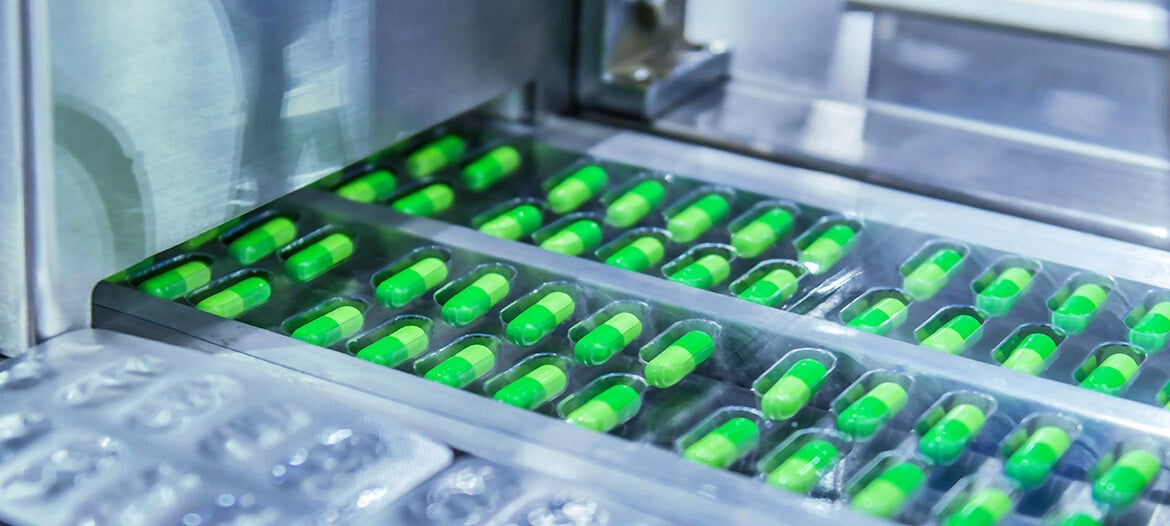Maintaining Product Integrity in a Global Supply Chain
Leading Minds Network Panel Discussion:
The following summary is from a panel discussion hosted by the ELPRO Leading Minds Network as part of its Temperature Control Tuesdays™ programming in partnership with Cold Chain Platform and PCI Pharma Services. This session featured Henry Moran, ASC Associates Ltd. (moderator); Peter Knapp, Maersk; Brett Marshall, Zuellig Pharma; and Anthony Yan, Takeda Pharma.
The summary will provide answers to the following questions posed to panelists:
-
What are the risks that you foresee currently in the Global Supply Chain in regards product integrity?
-
What are the future trends in the delivery of products to patients?
-
How will the regulations influence product integrity measures?
-
How can real-time technology maintain product integrity?
-
How is cost influencing product protection strategies?
-
How to develop a low risk global supply chain considering product integrity?
Unreliable Temperature Management, Counterfeiting and the Human Factor – What Are Threats to Product Integrity Within the Global Supply Chain?
In supply chains that are becoming more global, reliable temperature management is the biggest challenge, according to the panelists. Maintaining a continuous and stable temperature and a safe and consistent environment during transportation is critical for product integrity. Especially at regional or smaller international airports, there is a risk of not having adequate infrastructure, cold rooms, airside storage facilities, packaging systems (both active and passive), and appropriate movement of products between storage facilities. With regard to sea fright, the container is a very safe medium in terms of temperature constancy, and large sea fright terminals place great emphasis on shortening power-off-times. Still, medium and small terminals in less developed parts of the world, in particular, need to be monitored closely. According to the panelists, if it is possible to respond to alarms within five, ten or 15 minutes, risks can be effectively prevented.
Supply chains in the pharma industry became much more global […] and at the same time, products becoming much more sensitive to temperature changes and to environmental changes. So, from a product integrity point, one of the most important risks is in keeping continuous and stable temperature during the transportation.
Peter Knapp, Maersk
The human factor, i.e. knowledge and experience in handling packaging systems, is another decisive but also critical factor. Here, processes must be set up and employees must be equally skilled and trained. This is the only way to ensure that products and packaging systems are transported with due respect for the fragility of the product.
Counterfeiting remains a major risk, especially when it comes to life-saving medicines for developing countries. Access to medicines is still problematic there, creating a breeding ground for counterfeiters.
However, the panelists see a big opportunity in the use of virtual cold chains. Running simulations across transit lanes and identifying areas of risk is extremely important, and can provide a very good understanding of risks. Airlines, manufacturers and packaging manufacturers increasingly use simulations. However, manufacturing partners continue to emphasize physical validation. They do not accept simulation data as a supplier qualification method. A combination of simulation and real testing with dummies would currently be seen as the silver bullet here.
How ATMPs will change product delivery to patients and collaboration between competing supply chain participants?
The growth of advanced therapy medical products (ATMPs) represents a significant trend. The patient-specific drugs require a cell-to-cell supply chain that relies on very tightly integrated technology solutions, digital solutions to support temperature integrity and chain of custody requirements for handling these products.
It's not just the temperature aspect, but very high levels of integrity for chain of custody are required.
Brett Marshall, Zuellig Pharma
One resulting trend, according to the panelists, will be greater collaboration among supply chain participants in the future. Even in a highly competitive market, this is the only way to build the necessary knowledge of the supply chain from beginning to end. In this way, innovations can emerge and better services can be offered.
Collaboration between manufacturers and the integrated supply chain is also necessary because handling ultra-low temperature products requires high transport speed in addition to the optimal packaging solution. Further developments in packaging solutions and the speed of transport thus become the best risk prevention. There are already packaging solutions that can hold ultra-low temperatures for up to 48 hours. Also, an extremely well-connected supply chains will help to further increase the speed of transport.
What impact do regulations have on product integrity and how can better collaboration and standardization create further benefits?
The panelists share the experience that global regulatory organizations are expanding their influence to ensure product quality. Many guidelines on areas such as good manufacturing processes, quality risk management and pharmaceutical quality systems are being embedded into local GMP and GDP regulations. This will impact all stakeholders, whether or not they are part of the international or local supply chain.
Government support is an extremely important factor to protect product integrity and combat counterfeiting. To improve product integrity and safety, strong government support or clear regulations, strict inspection and effective enforcement measures must be implemented. However, given global supply chains, the panelists see a clear need to improve collaboration between market participants and regulators, and to optimize coordination between national authorities.
Collaboration is the key.
Peter Knapp, Maersk
The industry should continue to make its voice heard to regulators. In some markets it has already proven successful for regulators to ask the industry for comments and receive constructive feedback from the industry. Unfortunately, this is still the exception.
With around 180 governments looking to influence regulations in their own ways, the panelists see a great need for a more global approach. They call for a higher level of standardization across continents and across supply chains. That is because the lack of synchronization is, by nature, causing deviations.
How can real-time technology maintain product integrity?
Real-time technology allows supply chain participants to proactively intervene when irregularities in temperature data are detected. Stakeholders can often do so before any deviation occurs. This capability is especially important with the increasing number of biological products where extremely strict stability budgets must be met.
Pharmaceutical companies and their distribution partners are looking for more efficient ways to view temperature curves of their products online in order to keep track of what is happening with the products at all times. This process visibility is about controlling temperature deviations and temperature consistency. It is important in order to make reliable assessments about the shelf life of a product – even during the last miles to the patient. Combined with block chain technology, real-time monitoring technology will be able to counter product diversion in the future, enhance traceability all the way to the patient, and provide transparency and visibility to all stakeholders.
Block chain technology and real-time technology can contribute to product integrity and also enhance security.
Anthony Yan, Takeda Pharma
Nevertheless, there are some technical challenges to overcome. In particular, the shorter measuring interval of five minutes places high demands on batteries – they need to be small and powerful enough to process the data volume generated any given shipment or storage cycle. Especially during the last miles, (the part of the supply chain probably benefiting most from real-time monitoring) there are often problems with the local communications infrastructure creating gaps in signal integrity.
Do costs have an influence on product protection strategies?
When talking costs, all panelists agree that there must be no compromise on quality, equipment technology or digitization. ROI is important, but from a product protection perspective patient safety must always come first. However, economies of scale and strategic cost management can certainly create cost advantages.
There is obviously a huge cost difference between transporting 10 containers and 10,000 containers. At the same time, companies should think about strategic cost management. Investing in different packaging systems and infrastructure, for example, and avoiding over-engineering wherever possible. This strategy may not pay off immediately, but will see a return on investment in perhaps three to four years.
We've got to be pragmatic in our choices in relation to temperature control, packaging solutions, transportation solutions, and product protection solutions.
Henry Moran, ASC Associates
Collecting data (big data) can help companies decide which product protection program expenditures are appropriate and where significant cost savings can be realized. Virtual simulations and digital twins can also be helpful in this regard.
Will it be possible to develop a low-risk global supply chain with product integrity in mind?
Within the supply chain, companies need to consider a large number of other participants and partners. To do this, a company needs to know exactly what its end-to-end supply chain looks like, upstream and downstream. It also needs to understand its product flow. Then the organization can start assessing, conducting audits, developing standard operating procedures (SOPs), training all employees and external partners. This requires all stakeholders to collaborate to break down commercial and procurement borders, and look for the overall outcome.
A low risk supply chain must be built based on a joint effort.
Anthony Yan, Takeda Pharma
Within this ecosystem of people, infrastructure, process systems, technologies and partners, it's important to take a holistic view of the system risks, locating them and managing them effectively.
It's not any particular component individually; it’s the collective sum of the parts.
Brett Marshall, Zuellig Pharma
Outlook
Changes in the industry are challenging. Great strides have been made in the last five years, in an industry that traditionally moves rather slowly. However, panelists see opportunities rather than threats. One key to success will be integrated collaboration, as one party alone cannot overcome the challenges the industry currently faces. This also includes collaboration with authorities in the respective countries.
A strong focus on digitization is another success factor. Data on temperature curves, transportation results, and tracking and tracing in concert with serialization would ideally have to be made available on a common platform. Always with the goalof creating the best possible outcome for the patient.
More transparent handling and sharing of stability data could bring significant improvements to release processes. Including or embedding product stability data into devices offers great potential to speed up the understanding and assessment of where deviations impact the stability budget, and can therefore enable a much faster release process.
Last but not least, all of this has to be put in the context of sustainability and reducing the carbon footprint.







Leave a Comment